After Pancake Day follows Ash Wednesday, the first day of Lent, 40 days of penance, repentance, reflection and fasting in the Church calendar leading up to Easter, 46 days later (Sundays don’t count.) The 40 days reflected the 40 days Jesus spent in the wilderness being tempted by the devil, according to the Gospels.
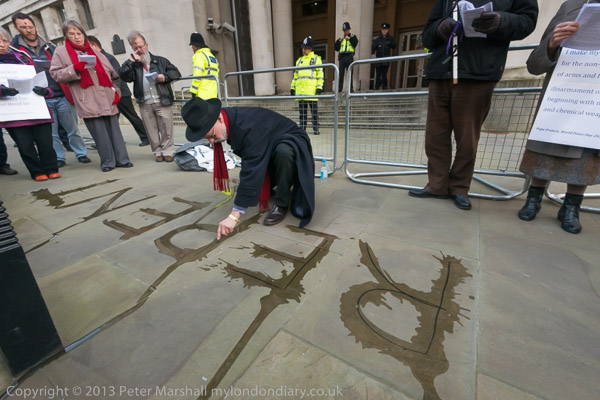
Every year since 1982, Christian peace organisations including Pax Christi, Christian CND and London Catholic Worker have observed the day with an act of prayer and witness at the Ministry of Defence in London, calling on them to repent from their deployment of weapons of mass destruction, and making use of the traditional symbols of sackcloth and ashes, though this year I think there was no sackcloth, though there were ribbons, being tied to a cross “in memory of a place/people in need of peace“.
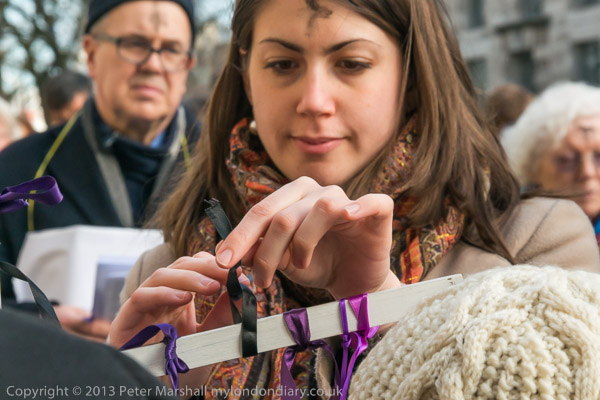
Photographing a religious event taking place in public like this I feel requires a certain reverence of approach, which sometimes makes it difficult to get exactly what you want. I think you have to be non-intrusive so far as the actual worship is concerned (not that photographers should get in the way at other events,) As a documentary photographer I try to alter things as little as possible, although of course there is always some interaction and our presence always makes some difference. But my heart always sinks when other photographers start arranging people and setting up pictures and getting in the way of an event.
There are occasions when this may be appropriate. Press calls are events set up just to be photographed, although even at these I’d prefer to see how those taking part want to organise themselves rather than how photographers would like to take pictures. I can see why photographers do this, and much of the blame is down to picture editors who seem to have a peculiar attraction to the clichéd boring group shots that are too often the result.
Occasionally during an event – though more often before or after – it may be appropriate to take portraits of some of those involved, directing them for your camera, but to try and do so during an event I think is disruptive to the event and those taking part and rude to other photographers. The streets are not a personal studio.
It is sometimes a thin line between what is acceptable and what is not, but one which at events like this it is important to try and draw. A few years ago, photographing this same event, I perhaps stepped over it, and received a complaint from one of the organisers. Since then perhaps I’ve been a little more careful – or perhaps they have become more used to me.
As I walked down the street after the service had finished with a couple of those who had taken part, they asked me about another photographer, complaining strongly about her getting in the way. I didn’t say much to them, but I was pleased when they also commented that I had been almost completely unobtrusive. It’s how I think it should be, and makes it easier for me – and other photographers – to work with these people another year.
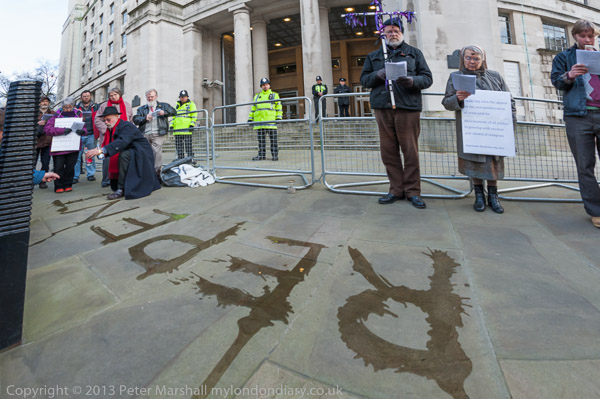
Fortunately for much of the event I had been the only photographer present, and was able to sit on the ground in the middle of things when the word ‘REPENT’ was traced out first in water, and then in ashes on the pavement in front of the Ministry of Defence. It isn’t easy to photograph, and I was glad of the 8mm fisheye to give me a very wide view (later converted to cylindrical perspective), as well as using the wide end of the 16-35mm.
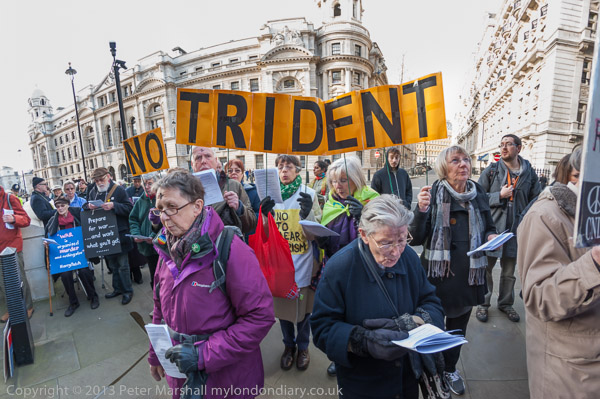
As a part of their witness, a number of those taking part try to mark the Ministry of Defence and War Office in charcoal with crosses and messages against war, and police are stationed all around both buildings to try and prevent this. It is a long perimeter, and people try from early in the day to well after the end of the service, making it hard for the police and for the photographer to catch them at it.
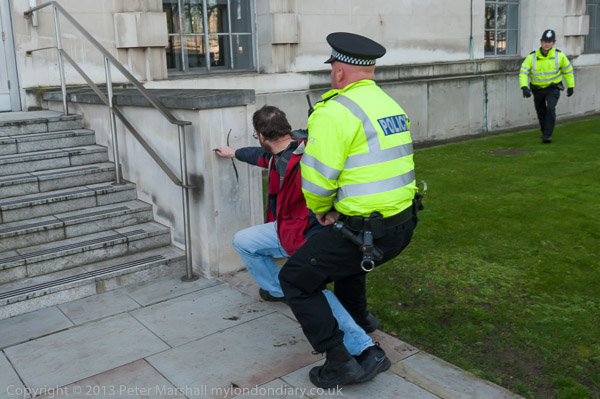
Even when an attempt was most predictable, when the roughly 100 people present were lined up at roughly arm’s length all along the long low fence between the ministry and the gardens, it was hard to know which of them would jump over to try and make a mark as they ended saying the Lord’s Prayer together. I was some distance away when I saw one man jump over, and the police had caught him short of the wall by the time I was close enough to take pictures, but seconds later I was in the right place as he managed to pull away from the officer holding him and make a cross before the police again overpowered him. Fr Martin Newell was released a few minutes later, but ten days later was sentenced at Westminster Magistrates Court for refusing to pay fines of £565 imposed for a number of similar acts of witness.
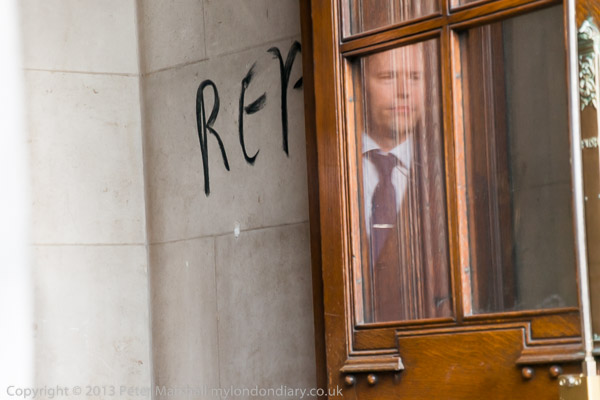
Later I saw another man being put into a police van, after having managed to write ‘REPENT’ inside the doorway of the War Ministry. I couldn’t see the whole word from the street, and was told by a police officer that I couldn’t take photographs as it was a “restricted place.”
It seems fairly clear that even if the old War Office is a prohibited place (and it seems unlikely as it is no longer owned by the government thanks to a PFI leasing scheme) this does not ban photography by the public for non-espionage purposes. Tourists in their droves photograph this and the Ministry of Defence building on a daily basis. But certainly the police were rather upset at having been caught napping, and were probably expecting to get a ticking off later.
But I’d taken my picture already, and wasn’t going to bother to stop and argue the point.
More pictures from the event at Ash Wednesday Act of Resistance
______________________________________________________
My London Diary : Buildings of London : River Lea/Lee Valley : London’s Industrial Heritage
All photographs on this and my other sites, unless otherwise stated, are taken by and copyright of Peter Marshall, and are available for reproduction or can be bought as prints.
To order prints or reproduce images
________________________________________________________